The Journey back
Day 9
9th day: 25 October 2005
The next morning we woke up charged with energy. We went down for breakfast in the hotel. It was very good. It was a Jewish holiday, Simchat Torah (Simchat Torah is a component of the Biblical Jewish holiday of Shemini Atzeret ("Eighth Day of Assembly"), which follows immediately after the festival of Sukkot in the month of Tishrei (mid-September to early October on the Gregorian calendar). For that reason, many of the Jewish sites we planned to visit were closed, unfortunately.
In conclusion, the sites we would manage to visit in Budapest would only be the tip of the iceberg since we were limited with time and it was a Jewish holiday. We would have to visit Budapest and other cities in Hungary on another trip. There was so much more to see.
This was the last day Tomash would spend with us before our paths would part. Sarah, Avi and I would have another 24 hours before flying back to Israel. Tomash surprised us when we were in Kraków, three days earlier, when he told us he had to finish the trip early and return to a previous engagement with another group he was touring. Only after we persuaded him, and as he became part of the family during our mutual journey, did he agree to stick it out until the very end. So on this last day, Tomash would be parting from us at noon to go to his other engagements. This also meant that the car would be going with him and we would need to carry the minimum amount of equipment as possible. We would return to the hotel only in the evening via public transportation. Until that time, we hadn't thought of the luggage we were carrying.
Still in Budapest, the first site we decided to visit was the Dohány Street Synagogue (also known as 'The Great Synagogue', beyt t'fila, "house of prayer", and "shul"). It was located in Erzsébetváros, the 7th district of Budapest. It is the largest synagogue in Eurasia and the second largest in the world, after the Temple Emanu-El in New York City. It seats 3,000 people and is a center of Neolog Judaism. It was recently renovated; it is a huge, marvelous and impressive building. Due to Simchat Torah, the synagogue was empty and we were only able to take pictures and film from the outside. The museum on the outer side of the vast building was also closed due to the holiday.
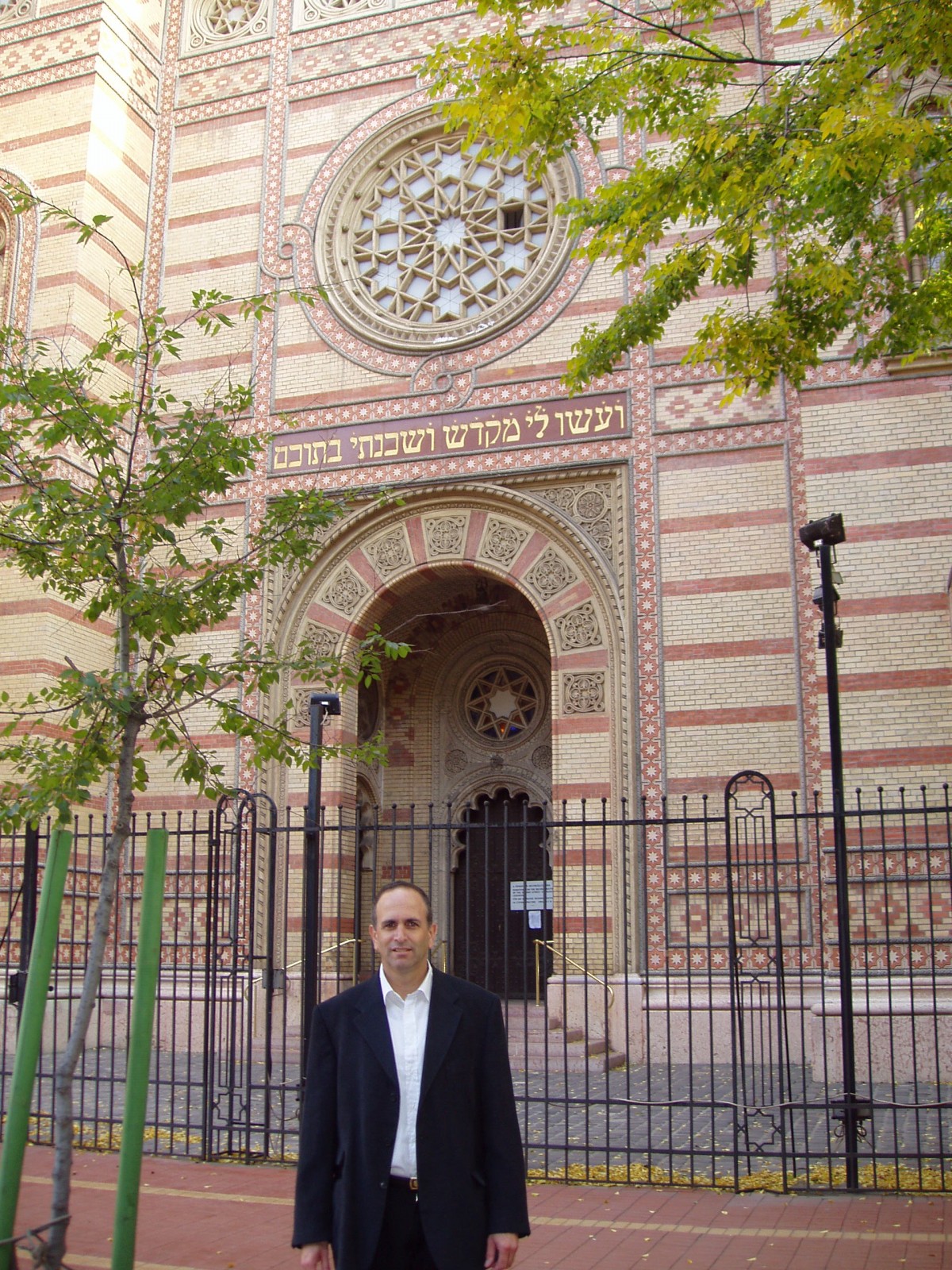
We entered the empty synagogue and were very impressed by the stunning architecture. There were 3,000 seats and during the year, we had read, there were several performances. We joined the public that was there for a holiday prayer. To our surprise, there was no separation between the men and women, as is custom in traditional Orthodox, and some conservative, synagogues. Avi goes outside and tells Sarah to come in for the prayer. She stayed in the car as she thought it was inappropriate entering a scared place wearing pants and not dressed nicely enough.
To add to the reformed atmosphere, we hear the prayer of the Hazan/Shaliah Tsibur who prays out loud while people join him. The Hazan sang with a choir of kids accompanied by a pipe organ in the background. At the end, he said the Kaddish ("holy"), a prayer found in many Jewish services. We exited and went outside after the Tfila (prayer), and walked around the massive building. On the other side, we found a Sukkah that was built for the holiday. A Sukkah is a temporary hut constructed for use during the week-long Jewish festival of Sukkot.
On the other side, we saw some buildings that were neglected and very old, needing restoration. This was a very visible contrast to the well-kept 'Great Synagogue' that stands out, drawing attention with its glamour.
As we continued walking around, we arrived at the Raoul Wallenberg Emlékpark (memorial park) in the rear courtyard which holds the Memorial of the Hungarian Jewish Martyrs. At least 400,000 Hungarian Jews were murdered by the Nazis. Made by Imre Varga, it resembled a weeping willow tree whose leaves bore the inscriptions of victims' names. There was also a memorial to Wallenberg and other "Righteous Among the Nations."
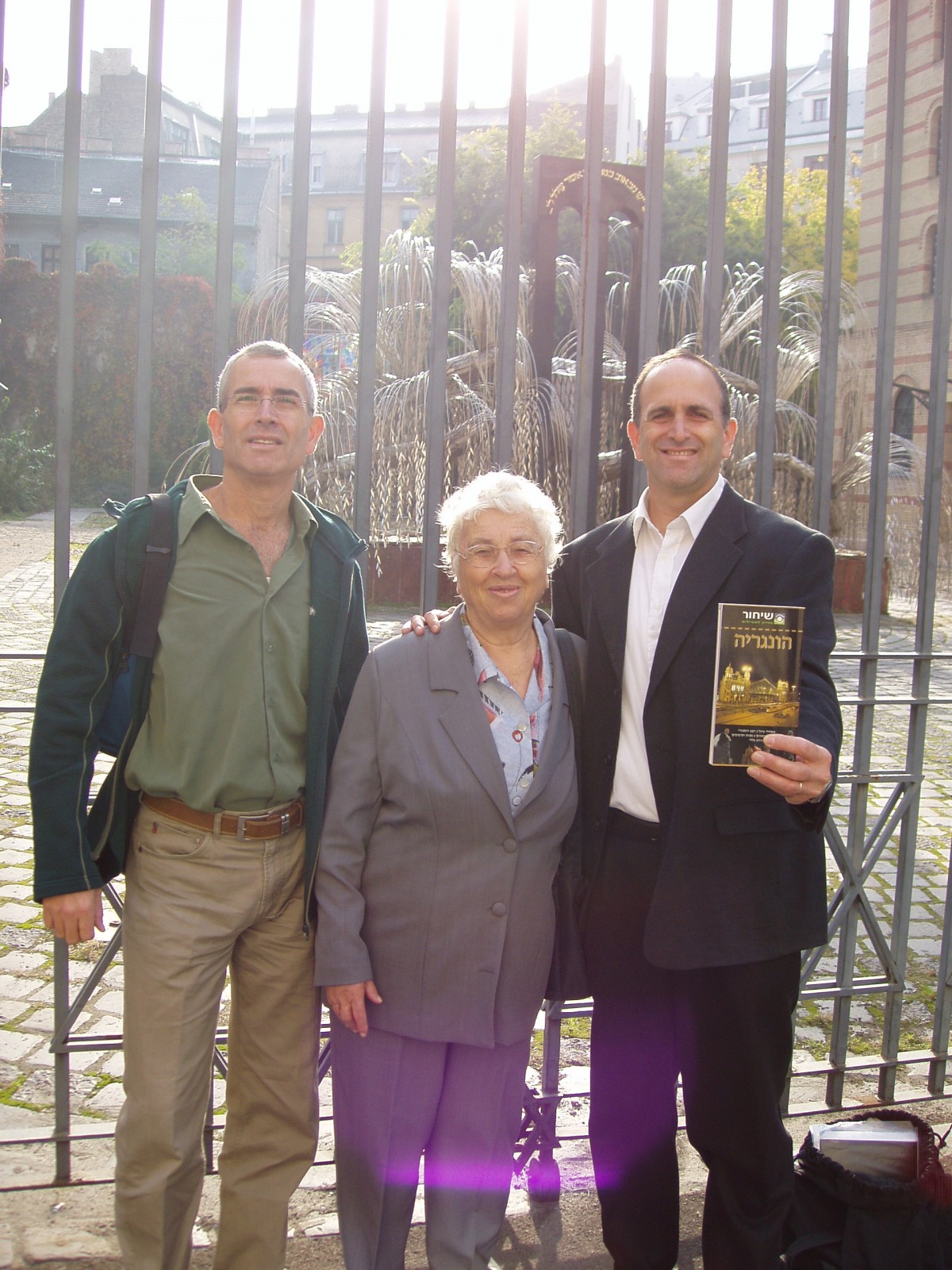
Since Tomash didn't know Hungary very well, he was able to help us a lot with explanations, and as a tour guide, in Poland, but here in Hungary we had to use the help of the guidebooks of Hungary and Budapest which I had brought from Israel. They elaborated about a lot of sites, history and culture that was useful. We used them to read a lot about the places we visited. The building next to the 'The Great Synagogue' was the place of birth of Theodor Herzl, and we took a picture near the sign pointing to the house where he and his family had lived.

From there we continued to Gellért Hill located in Buda, near the Danube River. The river splits the city into two parts: Buda and Pest. We were in the older part of Buda, on Gellért Hill where there was a beautiful landscape that allowed us to see the entre area, including all of Budapest and parts of the Danube River.
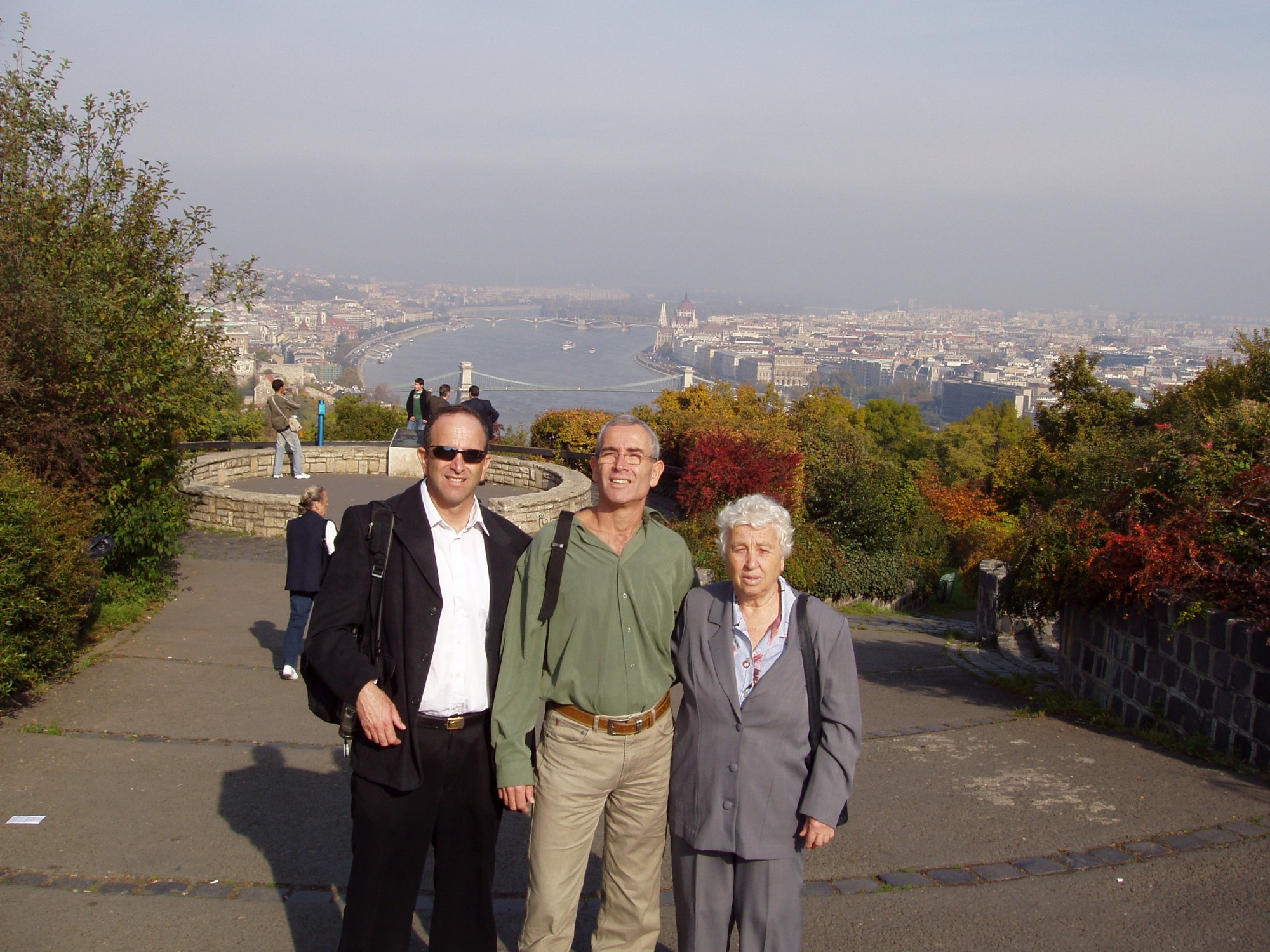
At Gellért Hill there was a famous 'Hotel Gellért,' Gellért Thermal Baths and Swimming Pool (Gellért fürdő), the Liberty Bridge (Szabadság híd) that connects Buda and Pest across the River Danube. There was also a gorgeous garden and the Great Market Hall where they had dozens of souvenir stands. It was also the location of the Citadel, and the Liberty Statue, a 14-meter tall, bronze statue standing atop a 26-meter wide pedestal and holding a palm leaf.
At the time of the monument's construction, the repulsion of Nazi forces by the Soviets was considered a liberation -leading to the original inscription upon the memorial, which could be translated to read "Erected by the Grateful Hungarian Nation in Memory of the Liberating Russian Heroes." Over the following years, public sentiment toward the Soviets decreased to the point of revolution, which was attempted in 1956 and which had subsequently damaged some portions of the monument. After the 1989 transition from Communist rule to a more democratic government, the inscription was modified to read (translated from Hungarian), "To the memory of all of those who sacrificed their lives for the independence, freedom, and success of Hungary."
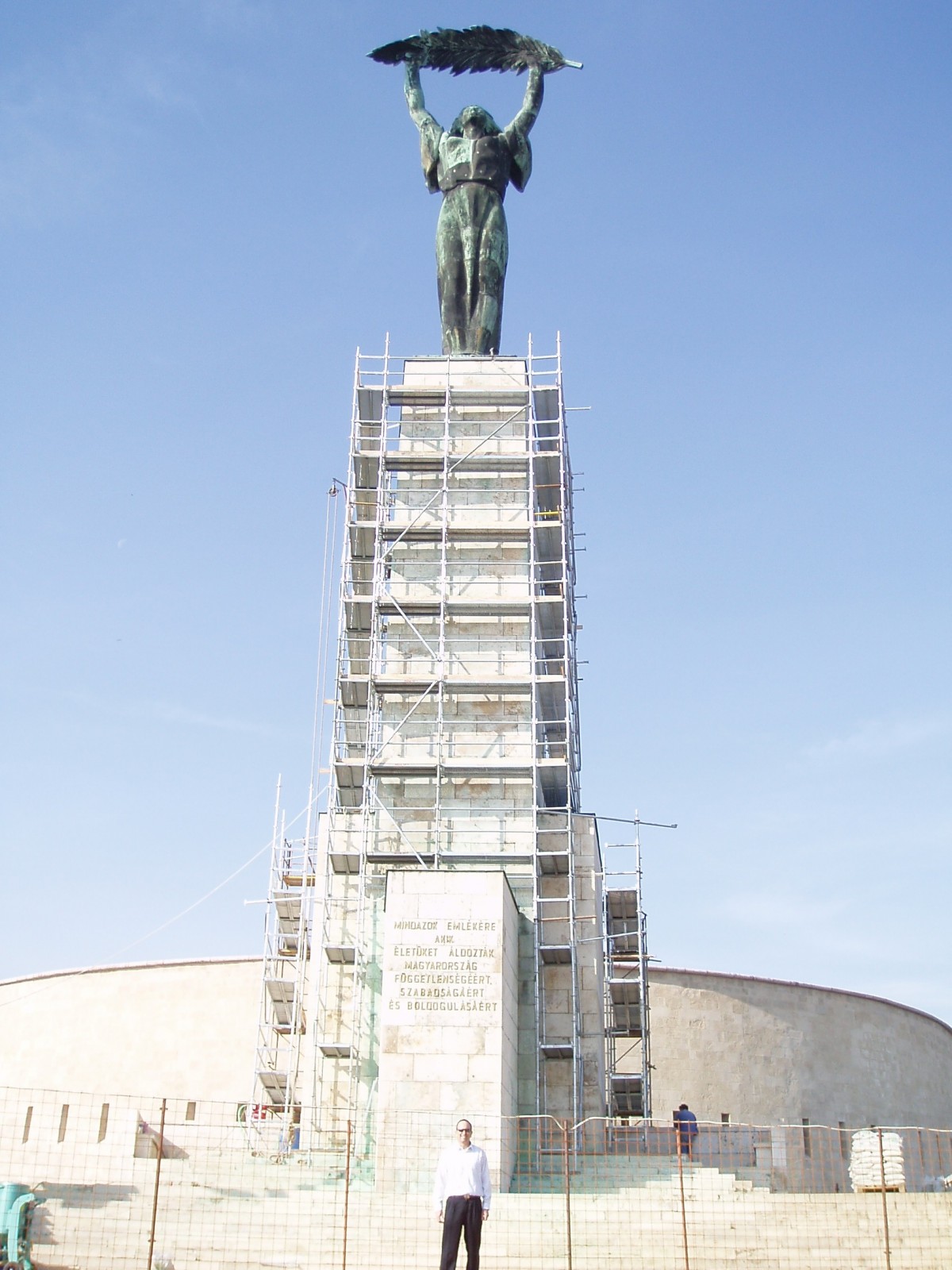
The view from Gellért Hill was stunning. The scenery in almost every part of the capitol, and the Danube River where we saw boats sailing peacefully, was absolutely breathtaking. The Polish could learn from the Hungarians; the Visla River didn't even compare to this panoramic scene.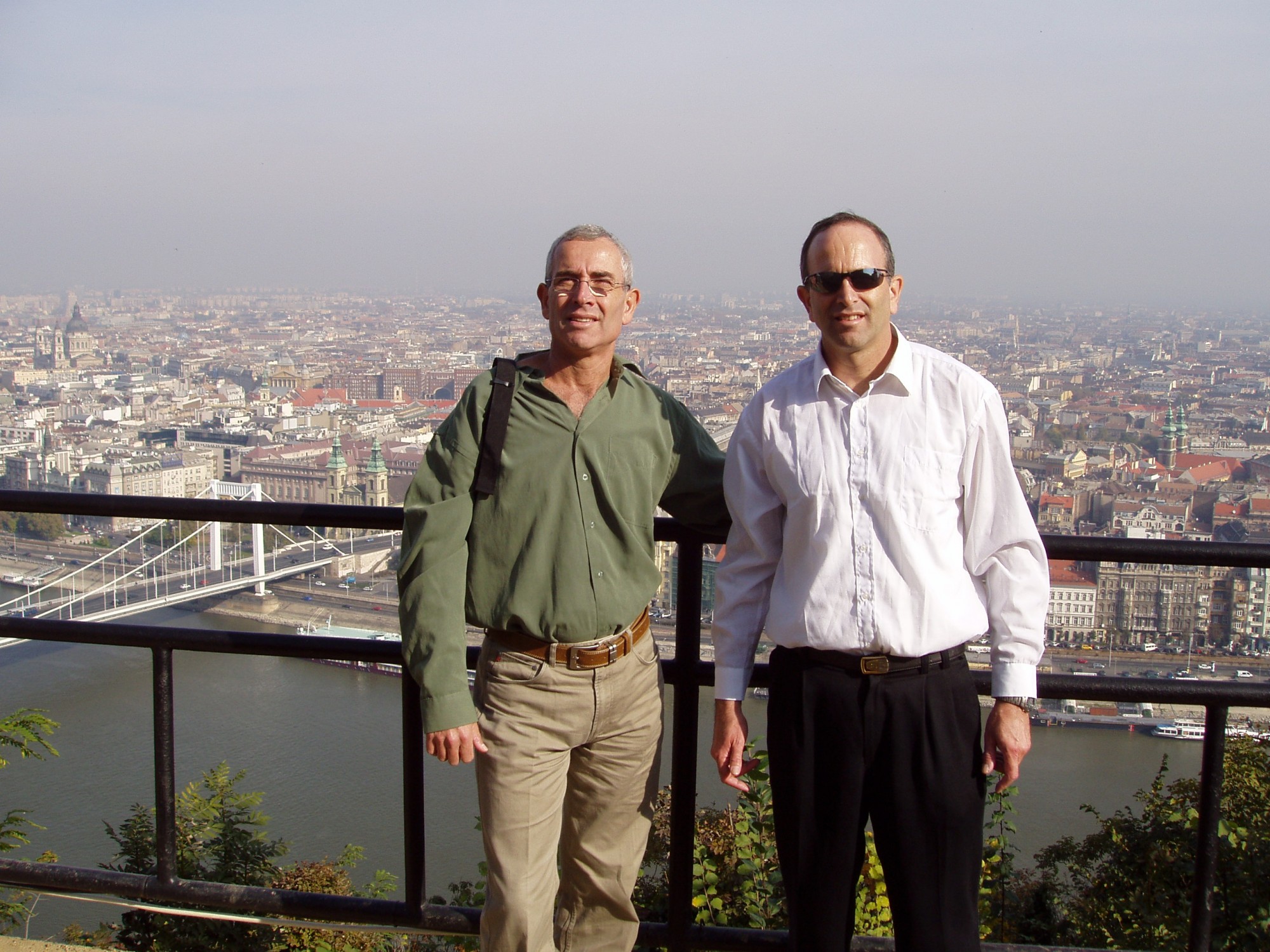
At that point, we stopped to discuss where we should head next. We ended up asking Tomash to drop us near the Citadel area on his way back to Poland. We started walking towards his car and then said our goodbyes and thanked him for all his help and generosity.
After a short drive across Buda, we reached our destination and once again thanked Tomash and parted ways. He dropped us off at Gellért Hill near the Citadel. Tomash is a very intelligent man, knows many languages and is worldly. He develops a good vibe with people easily and gets along with practically everyone. Sarah said goodbye from her heart and got pretty emotional. He managed to change her way of thinking when it came to the Polish people.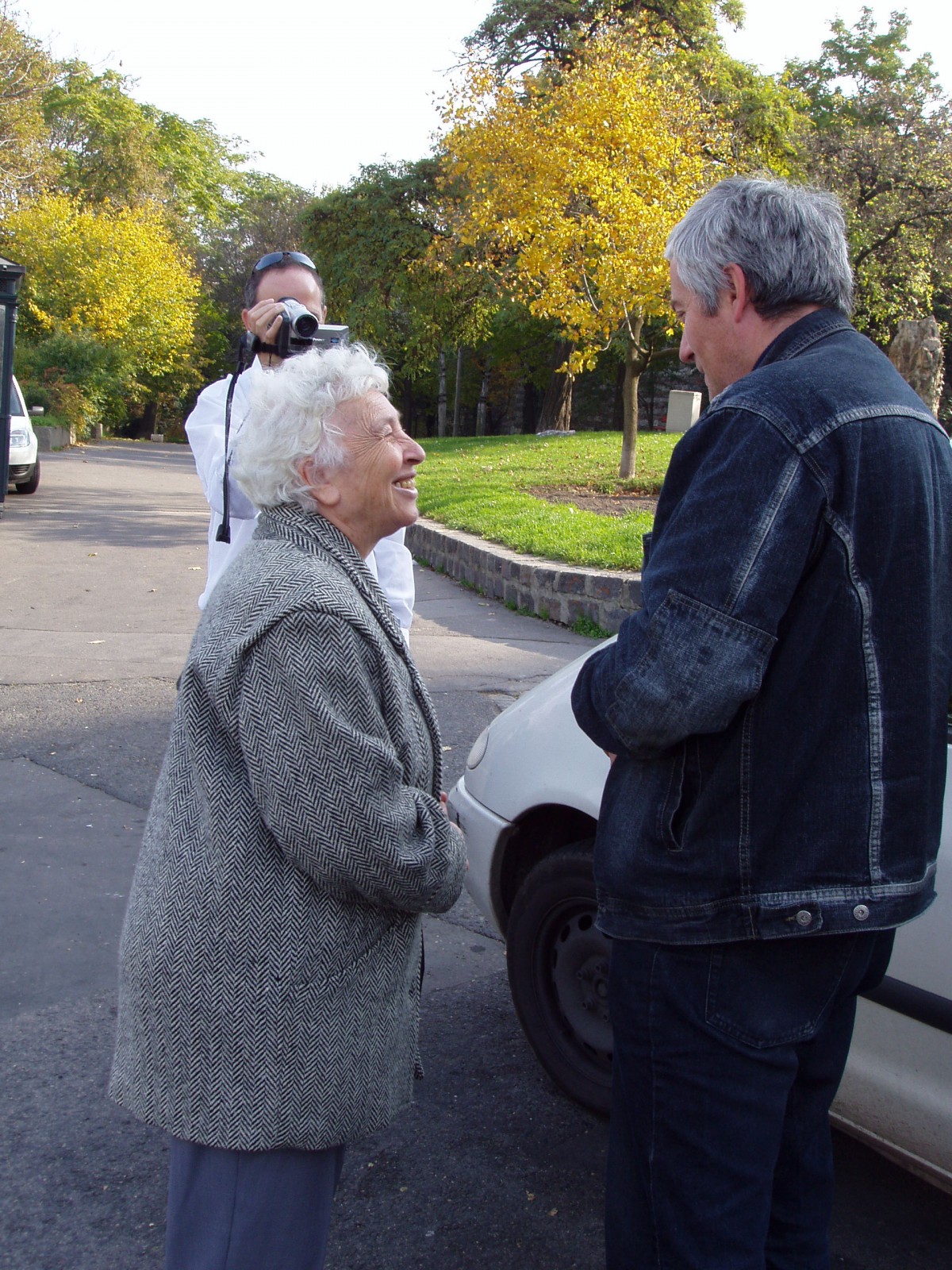
As a gift, we gave Tomash a copy of the life story of Sarah, which entails her survival journey. Sarah wrote a personal dedication for Tomash and gave him a kiss on his cheek. We took a last picture together as a souvenir.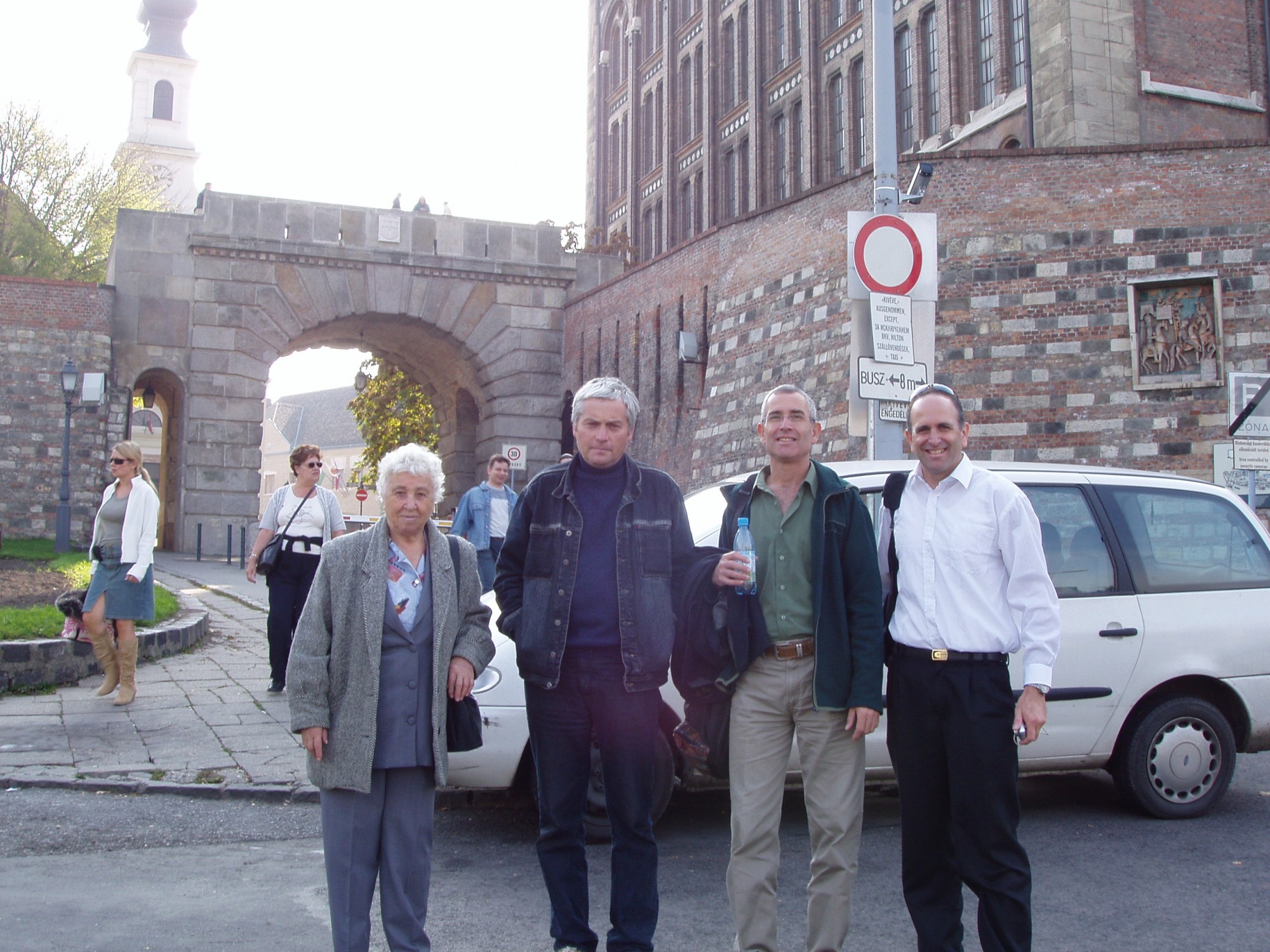
I promised I'd send him all the pictures from Israel along with the Iraqi cook book that my wife's father, Moshe Aslan (may he rest in peace) wrote. Tomash mentioned that he loves to cook, and is interested in new recipes. I sent it to him after we returned to Israel.
The time was 2:00 p.m. From then on we had a half day to tour this beautiful city. In the Citadel, there were many sites and much to see, such as: Matthias Church, Mátyás Fountain, the Monument of Prince Eugene of Savoy, the statue of the Horse Wrangler, Budapest History Museum, which was in the southern wing of Buda Castle, along with many other sites. On our way, we saw a small museum of an old synagogue from the middle ages that had been found during an archeological excavation.

We entered and received information and a short lecture, in Hungarian and English, from the person in charge of the place. From there, we continued to a lovely narrow street with a huge book store, combined with a coffee shop. We browsed through the books and bought a few on the Jewry in Hungary, and its history.
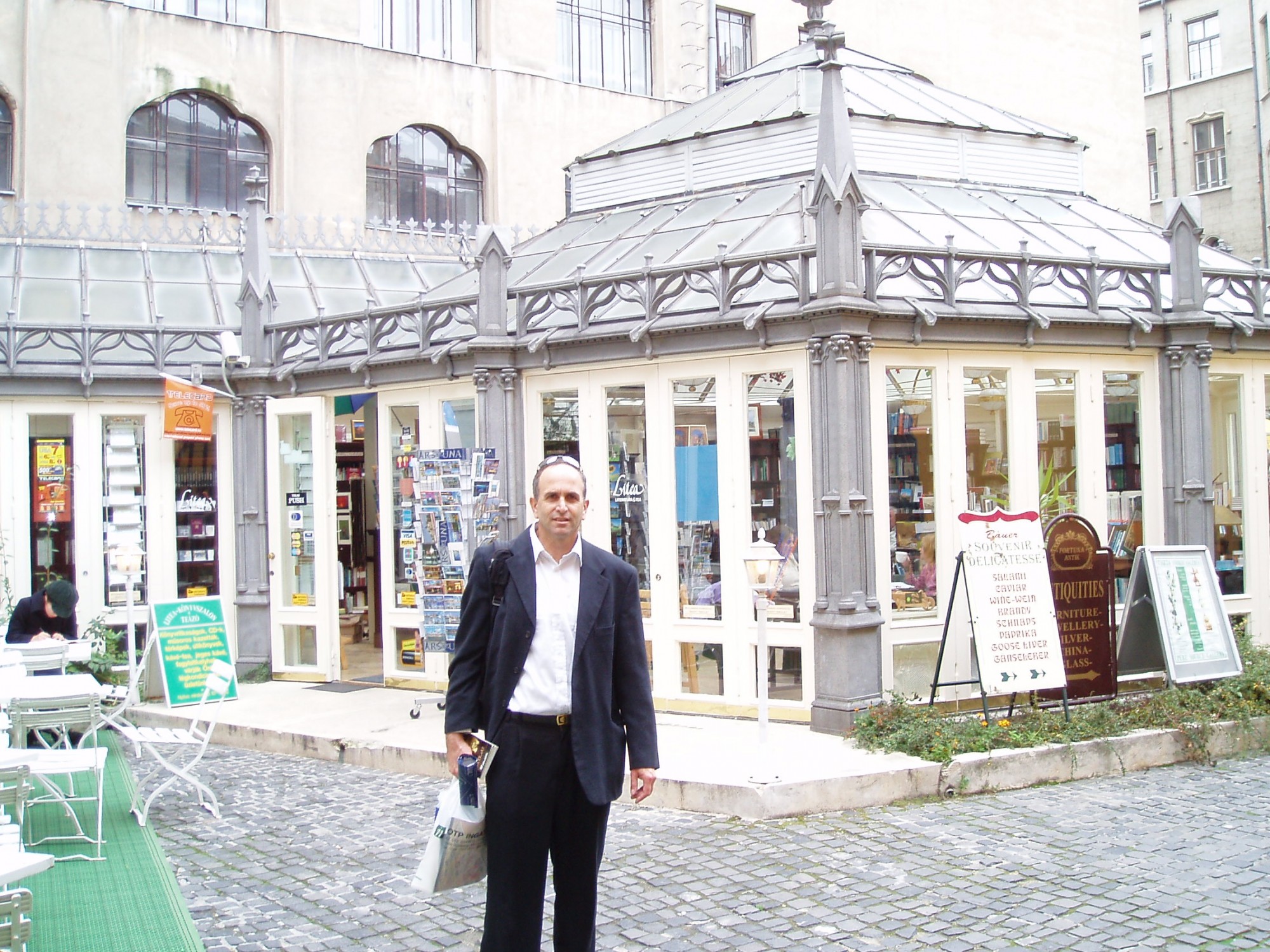
From there we continued to an old fortress (seemed like it was from the Middle Ages, knight period), but as it turned out, the designed fortress was built in the 19th century. Its name was Fisherman's Bastion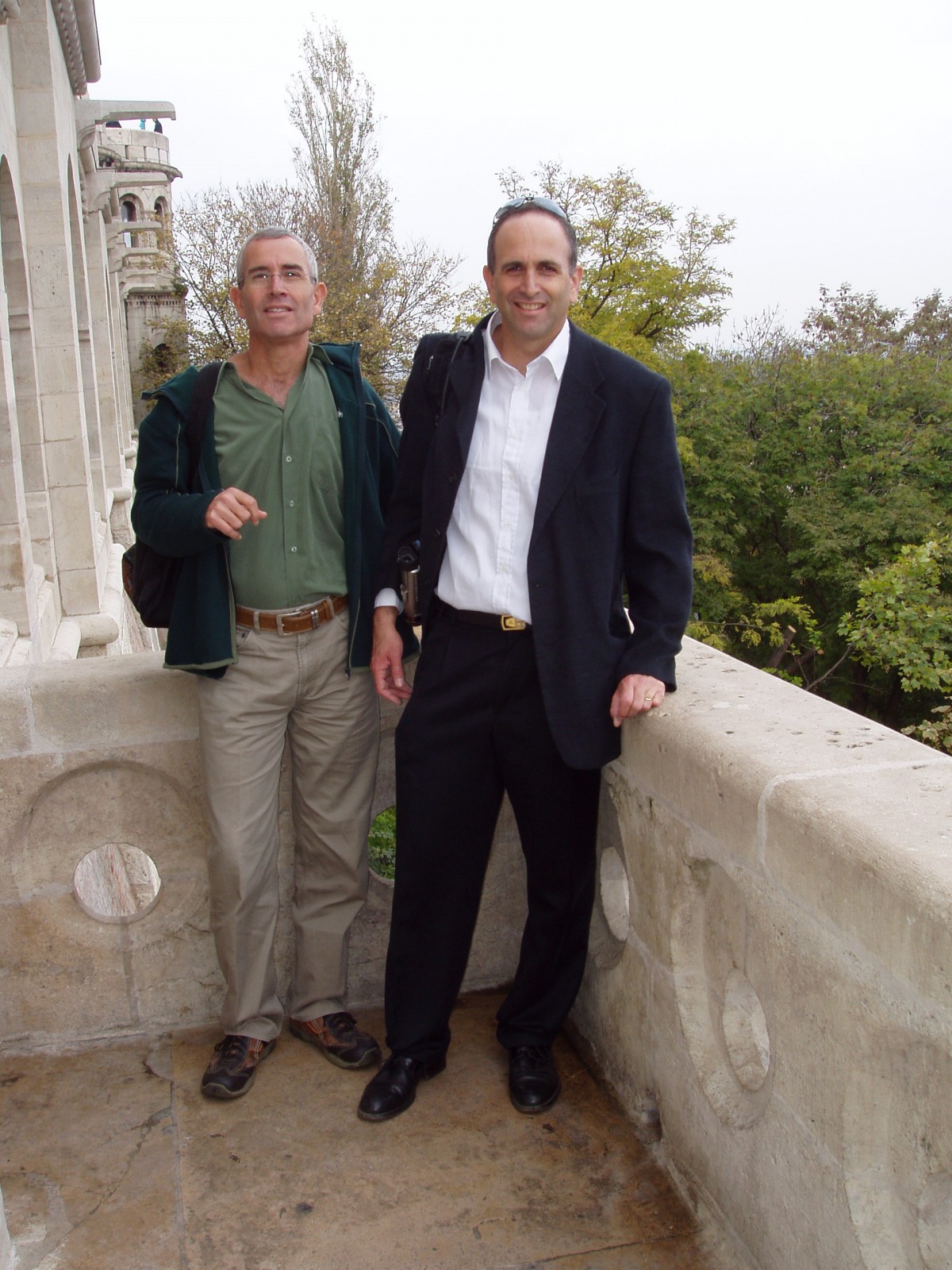
We sat to eat something light in the coffee shop-restaurant at Gellért Hill. The food there wasn't very tasty and was very expensive, had slow service, but the view and atmosphere were excellent.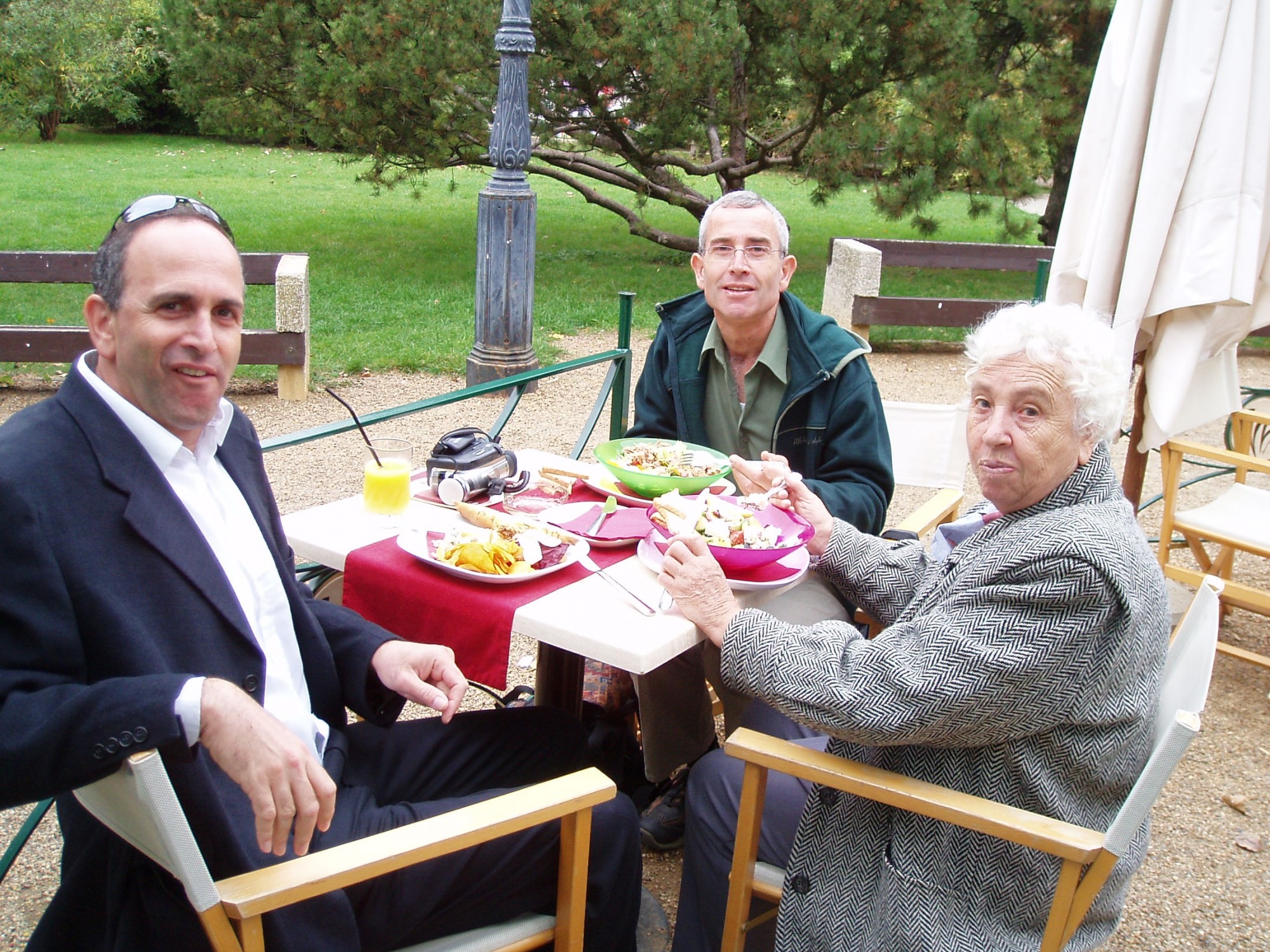
After we sat and rested a bit, we continued walking and took a few more pictures of the site before it got dark. One of my favorite was near the royal castle, with the Danube River in the background.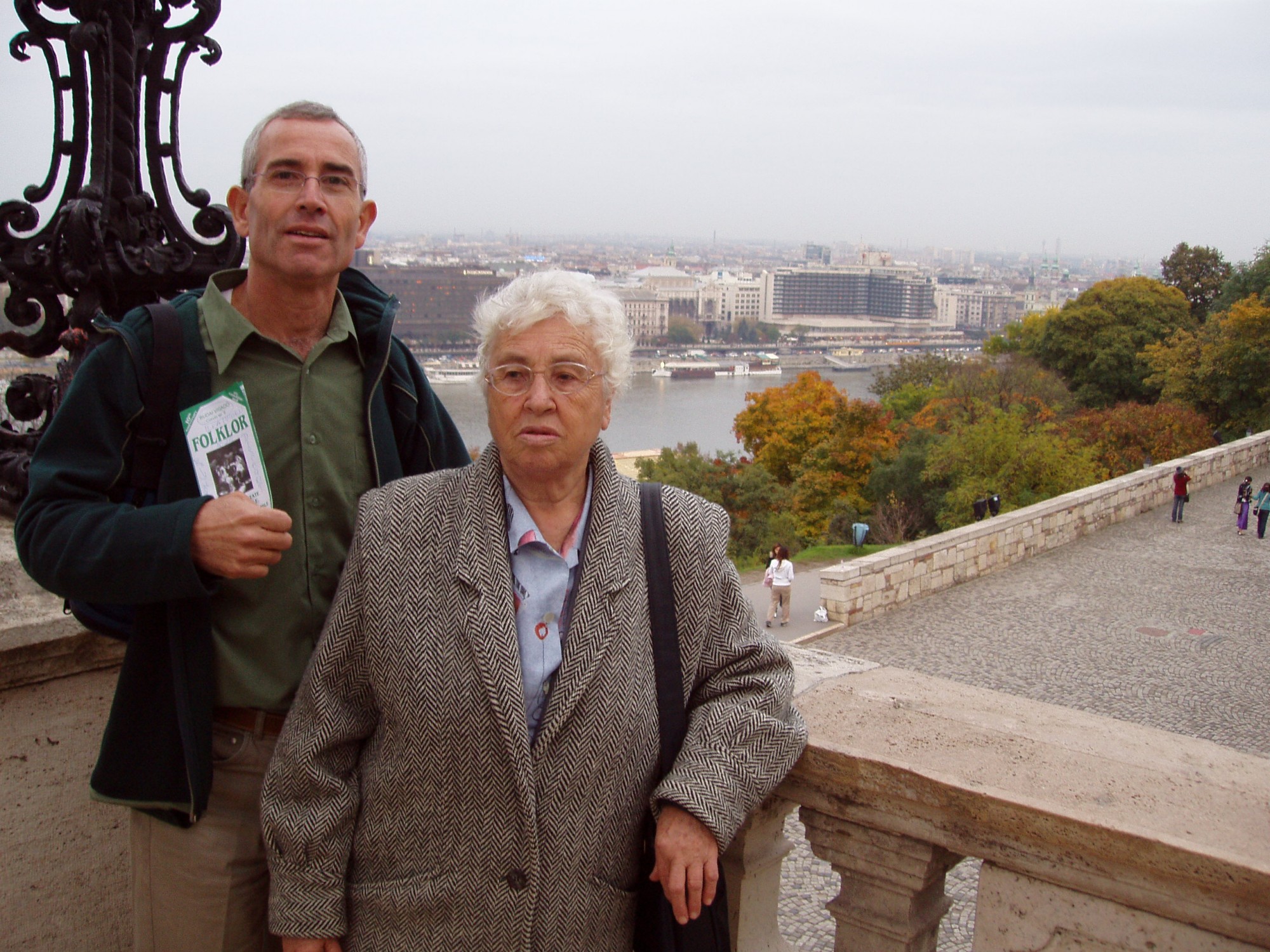
... and also near the beautiful old fountain.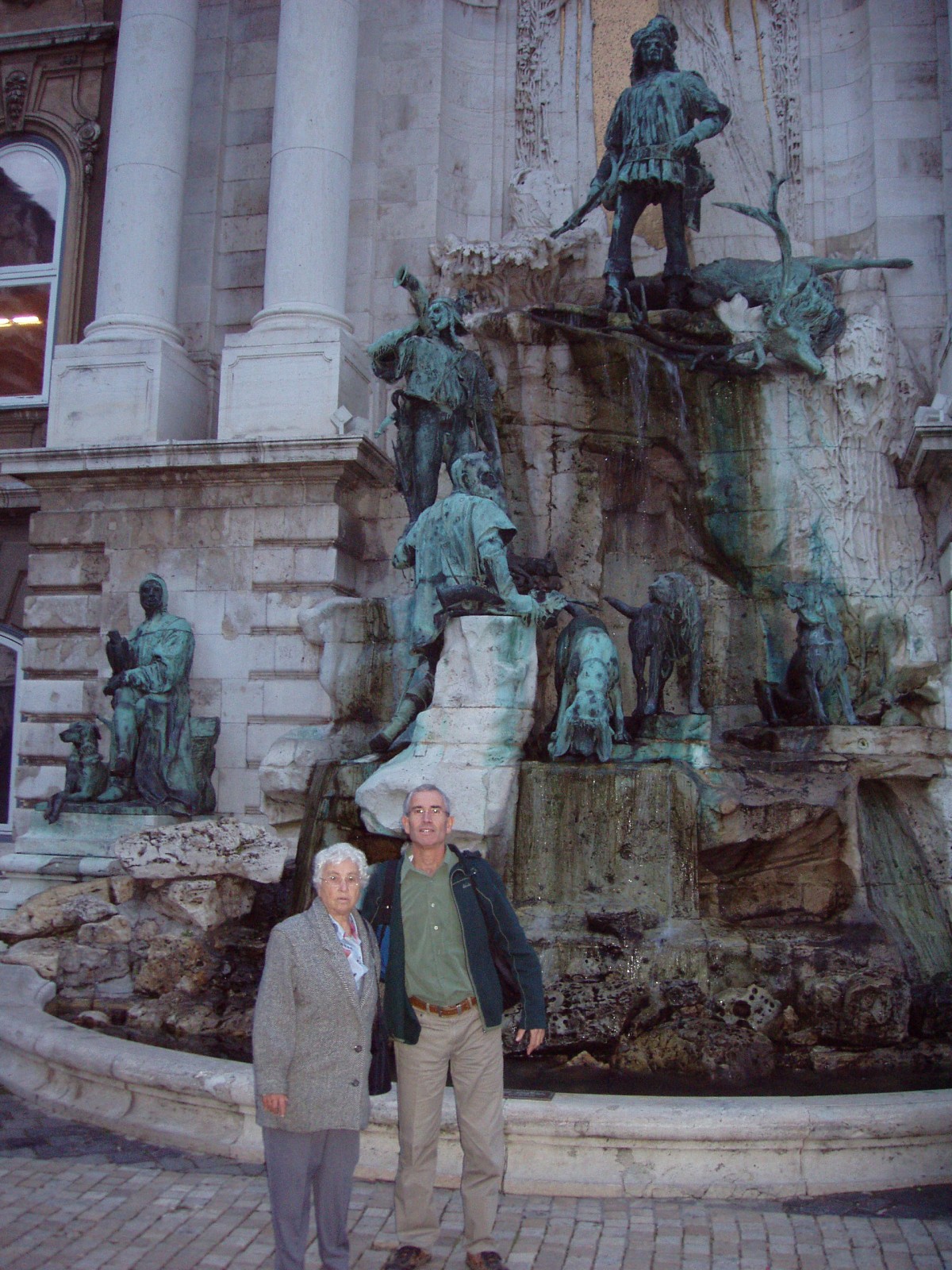
As we came down from Gellért Hill and walked towards the bus station, we entered a restricted area where there were stands of home-made Hungarian souvenirs, such as embroidered table cloths, paintings, Hungarian Dolls (called "Babák"), and other souvenirs for tourists.
I wanted to buy a Hungarian doll for Lior, so we bought a few presents. We were smart and bought the bus tickets earlier when there was no line. We hopped on the bus and head towards our hotel in the center of the city. We get off the bus at its final stop and walked to Váci street (Váci utca in Hungarian), which felt a lot like the Dizingof Street of Budapest (Dizengof is a prominent retail street in Tel Aviv), central and full of stores and restaurants. We walked down the street and window shopped. It was already evening and some of the stores were closed, or closing.
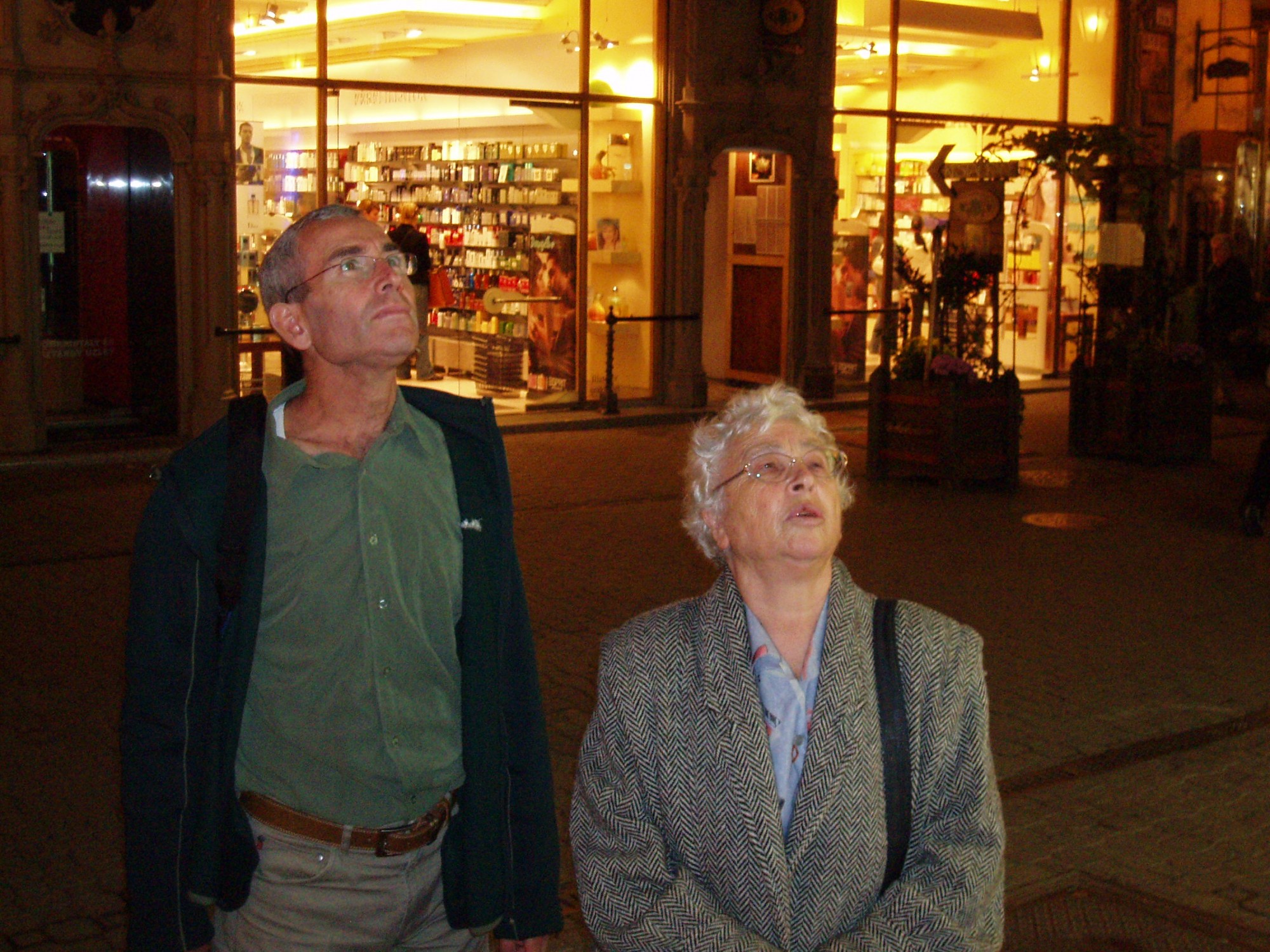
Mom was already tired after the long day and all the walking we did. Avi tried to convince her to sit with us for a nightcap, as we had done each evening. She said she was too tired, thought, and wanted to head to the hotel and go to sleep. The hotel was not far and we walked with her. On our way, we stopped and exchanged more money for the following morning. We saw on one of the houses the sign of Dr. Kaszner Rezső, the same Jewish man that was the center of a disagreement when he saved lives of Jews in 1944 and was afterwards murdered for it in 1957.
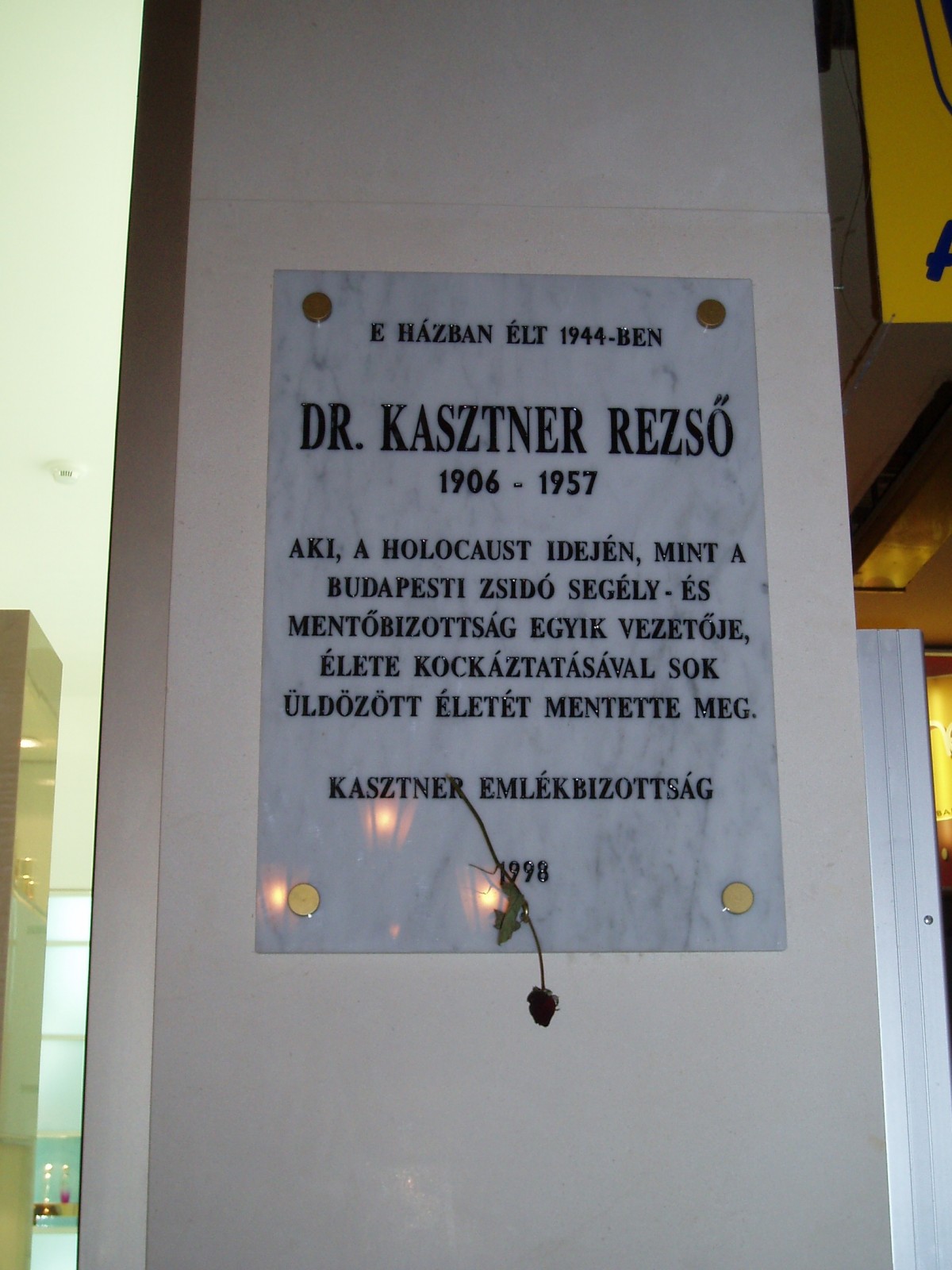
We reached the hotel but Avi and I still felt energetic. We showered and got ready then headed down after a half hour to the main street, Váci utca. This time we walked along the street towards the other side we hadn't yet visited and searched for a nice place to sit for a meal and drinks. In one of the restaurants we heard Jewish music; it caught our attention, so we walked towards the place to see what was there. There was a fiddler and an organist playing music on the stairway inside the restaurant for an audience and the other people that are having dinner there. We liked the atmosphere and decided to sit. We ordered salads, pasta and soft drinks. We enjoyed the music and atmosphere, which was a marvelous ending to our last night in Budapest.
